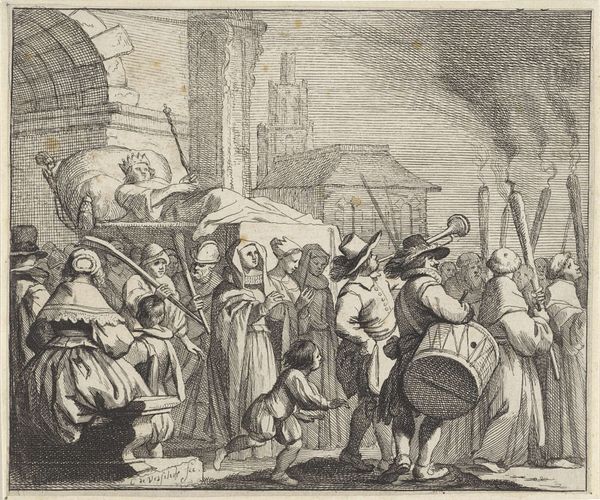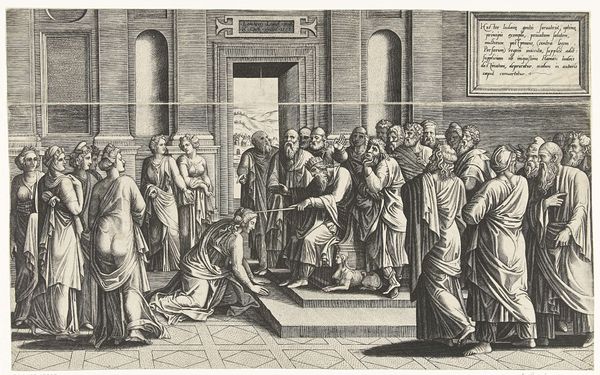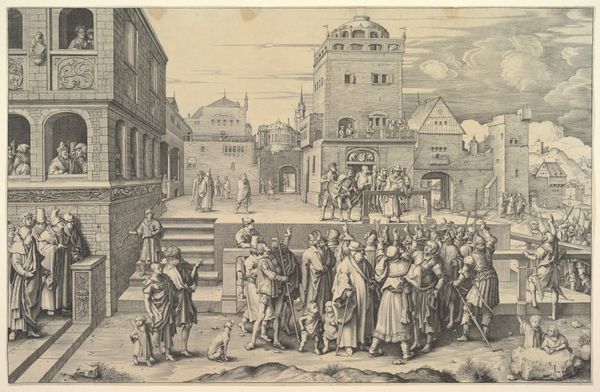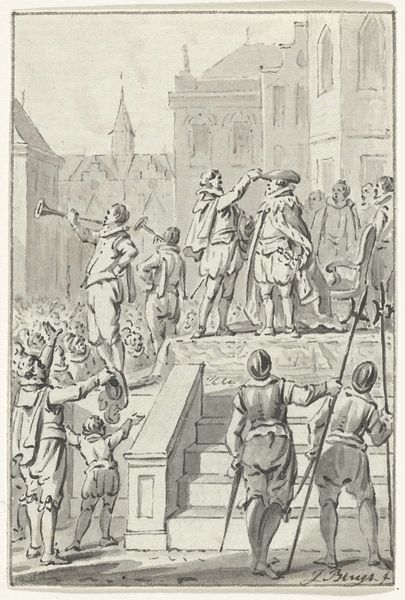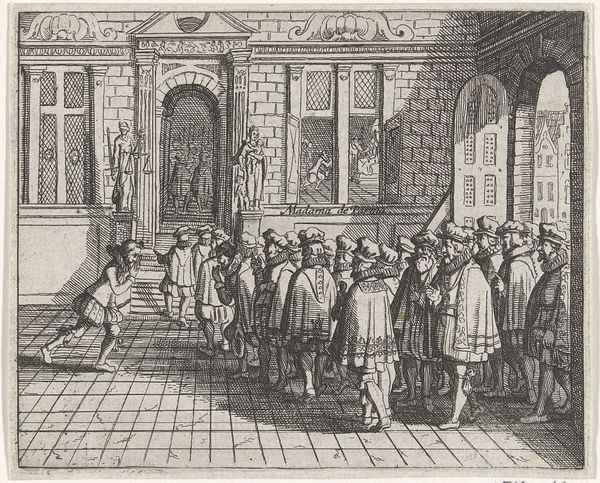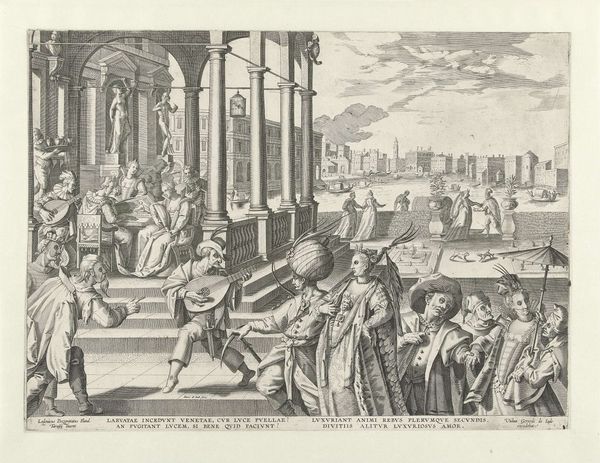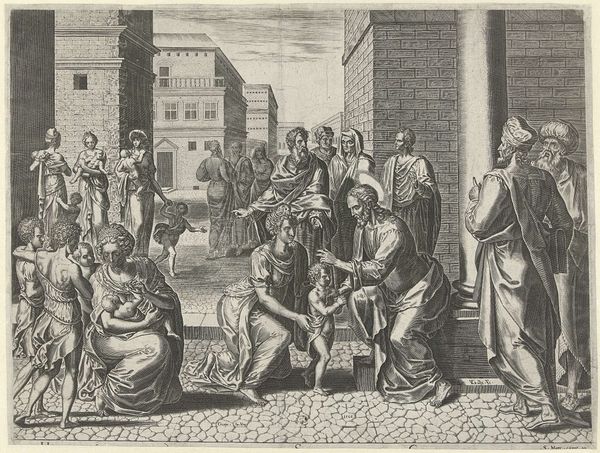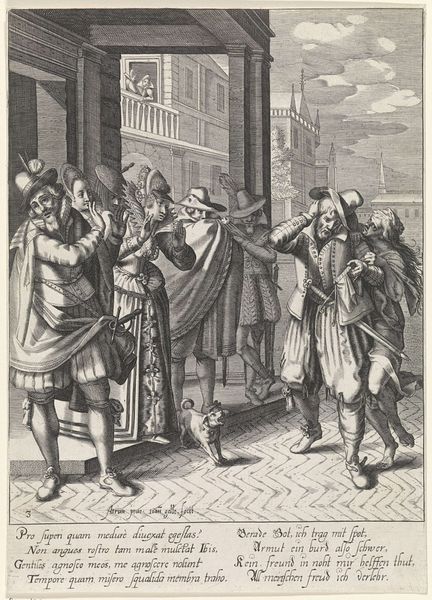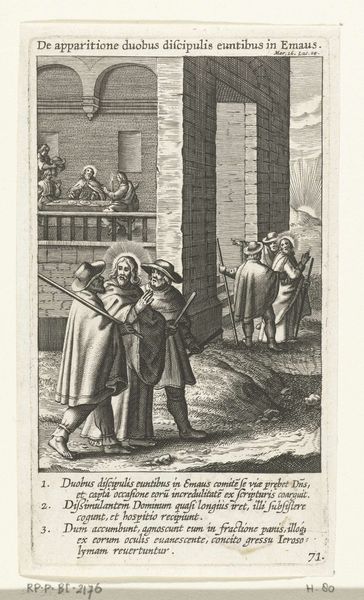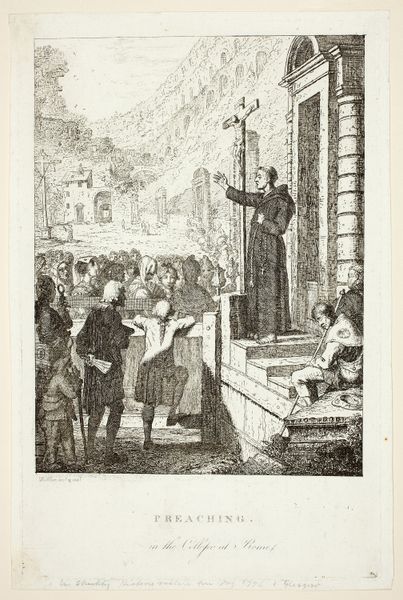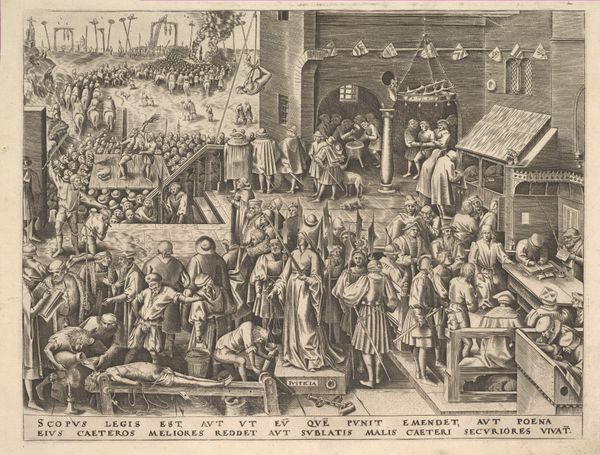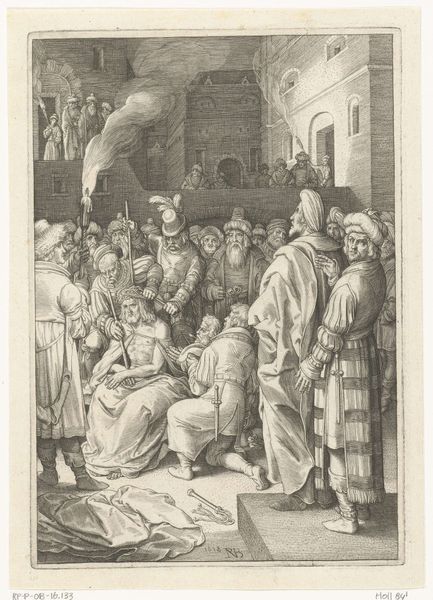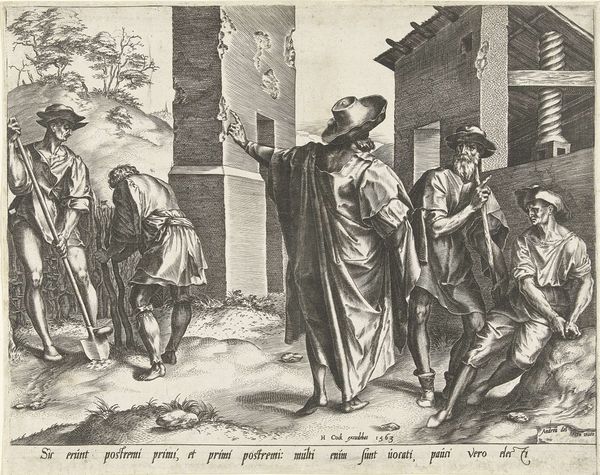
Deel van de begrafenisstoet van Ernst Casimir, graaf van Nassau-Dietz te Leeuwarden (plaat 20), 1633 1634
0:00
0:00
jhermans
Rijksmuseum
print, engraving
#
narrative-art
#
dutch-golden-age
# print
#
figuration
#
line
#
cityscape
#
history-painting
#
engraving
Dimensions: height 220 mm, width 485 mm
Copyright: Rijks Museum: Open Domain
Editor: This detailed engraving, "Deel van de begrafenisstoet van Ernst Casimir," created in 1634 by J. Hermans, depicts part of Ernst Casimir's funeral procession. I'm struck by how the artist managed to convey so much information with such fine lines. It almost feels like a photograph from the era. What’s your take? Curator: Ah, yes. It’s more than a snapshot, it’s a symbolic journey, isn't it? I see a meticulously staged representation of power and lineage. Those aren’t just mourners; they’re embodiments of political and social significance, their placement, the buildings – and it reminds us that funerals in that era weren’t just about mourning; they were powerful displays. Don’t you think the artist captured the weight of that responsibility in their solemn procession? It's almost theatrical. Editor: Absolutely, there is an intentional display. The costumes and somber mood are well portrayed. Given the prominence of text on the right side of the print, do you think there is an important story to extract from that information? Curator: That text... it's a formal inscription, celebrating Ernst Casimir and listing his lineage. These types of inscriptions, they acted almost as PR, solidifying the family’s status for generations to come. But notice also the skull detail that hovers right at the top - the symbolism indicates awareness of death in times of great expression and life in the Dutch Golden age. What an incredible way of reminding us that glory doesn't last forever... Editor: It really makes you wonder about the society that produced such imagery, doesn't it? This definitely changes how I view historical prints. Curator: Indeed. Seeing beyond the surface, questioning the intent – that's where the real art experience begins, don’t you think? Every mark is imbued with meaning. It's almost magical when you know the story.
Comments
No comments
Be the first to comment and join the conversation on the ultimate creative platform.
